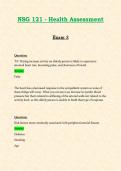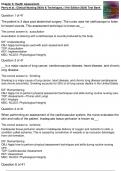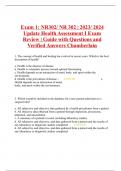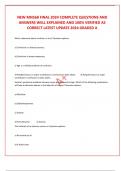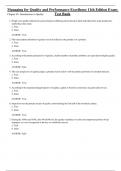Tentamen (uitwerkingen)
Intrapartum Fetal Surveillance Foundations of Maternal-Newborn & Women's Health Nursing, 7th Edition exam with complete solutions
The nurse sees a pattern on the fetal monitor that looks similar to early decelerations, but the deceleration begins near the acme of the contraction and continues well beyond the end of the contraction. Which nursing action indicates the proper evaluation of this situation? a. This pattern reflec...
[Meer zien]






